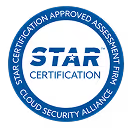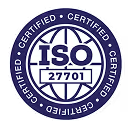Project management is a complex and multifaceted discipline that involves planning, executing, and monitoring various tasks and activities to achieve project goals. The advent of technology has given us some incredible project management tools that have become a must-have for almost all businesses today. But to truly make the most of these tools, it's worth considering incorporating automation into your project management software to save you countless hours every week managing manual and repetitive tasks.
In this blog, we'll dive into the world of project automation, explore its uses and implementation, highlight key features of automation platforms, and discuss the many benefits it brings to your project management efforts.
Definitions
Before we dive into automation, let's establish a foundational understanding of project management software and what automation is.
Project management software
A project management software is a digital platform that assists project managers and teams in planning, executing, monitoring, and closing projects. It provides a central hub for collaboration, task management, resource allocation, and progress tracking.
Professional Services Automation (PSA) Software
PSA software is a specialized type of project management software tailored for professional services firms. It goes beyond standard project management tools by integrating functions like resource management, time tracking, and financial management.
Automation
Automation is the technological wizardry that allows you to set up rules, triggers, and actions within your project management software, enabling it to execute tasks without manual intervention. Think of it as your digital assistant, taking care of repetitive and time-consuming processes. It not only saves time but also reduces the likelihood of human error.
Project automation
Project automation refers to the use of automation software within your project management tool to streamline various aspects of your project workflows. This can range from task assignment and notification reminders to more complex processes like resource allocation and bottleneck identification.
Benefits of project automation
- Efficiency: Automation reduces the need for manual intervention, allowing project managers and teams to focus on more strategic tasks.
- Accuracy: Automated processes are less prone to errors, ensuring that project data and tasks are consistently accurate.
- Consistency: Automation ensures that project processes are standardized and consistently applied across the organization.
- Time savings: By automating routine tasks, project managers can allocate their time more effectively, leading to faster project delivery.
- Cost reduction: Automation can lead to cost savings by reducing the need for manual labor and minimizing project delays.
How does automation help in project management?
Now that we have a basic understanding of project automation let's dive deeper into how it can significantly benefit project management.
1. Task management
Automation in project management software can streamline task allocation and tracking. Project managers can automate the assignment of tasks to team members based on predefined rules and priorities. This ensures that each team member knows their responsibilities and deadlines, reducing the risk of tasks falling through the cracks. Additionally, automated task reminders and notifications keep everyone on the same page, promoting collaboration and accountability.
2. Reporting and analytics
Generating reports and analyzing project data can be time-consuming and error-prone when done manually. Automation allows project managers to create custom reports and dashboards that provide real-time insights into project progress, budget status, and resource utilization. This data-driven approach empowers project managers to make informed decisions and adjust project strategies as needed, leading to better project outcomes.
3. Communication
Effective communication is crucial for project success. Automation can improve communication by sending automated notifications, updates, and reminders to team members and stakeholders. Project management software can also facilitate automated email notifications for specific project milestones, ensuring that everyone is informed and aligned with project objectives.
4. Resource allocation
Managing project resources, including personnel, materials, and equipment, can be a complex task. Automation helps project managers allocate resources efficiently by analyzing resource availability and workload. This ensures that resources are optimally distributed, preventing overallocation or underutilization, which can lead to project delays and increased costs.
5. Risk management
Identifying and mitigating project risks is a fundamental aspect of project management. Automation can assist in risk management by continuously monitoring project data and identifying potential issues or deviations from the project plan. Automated alerts and triggers can prompt project managers to take proactive measures to address risks before they escalate, reducing the likelihood of project failure.
6. Enhanced productivity
Automation is a powerful tool for boosting your team's productivity, allowing you to accomplish more in less time without the need for additional resources. By using templates and automation, you can expedite the creation of new projects and tasks. Automation streamlines the process by populating templates with standard information, saving time and reducing the risk of errors and omissions.
Moreover, automation has the remarkable ability to enhance scalability. When effectively implemented, it can exponentially increase both the output and quality of your team's work.
7. Facilitates integration
Modern businesses often rely on an array of tools, systems, and applications in their daily work. The proliferation of SaaS tools over the past decade has undoubtedly improved efficiency. However, the sheer number of these tools can become overwhelming and impede employee productivity.
Lack of effective communication between these tools and systems can lead to slowdowns and information silos. This situation demands significant time and effort to gather and consolidate data, hindering the formation of an accurate overall project picture.
Automation and integration address this issue by enabling multiple tools and systems to seamlessly exchange information, automatically reflect updates, and provide a consolidated source of truth. This eliminates the need for you and your team to spend excessive time searching for and aggregating information, allowing you to focus on meaningful work.
8. Quality maintenance
Automation plays a huge role in maintaining consistent work quality. Automation minimizes human intervention, ensuring work quality remains high.
Additionally, automation can intelligently route projects and workflows to the right individuals based on project prerequisites and issue real-time work notifications. This ensures tasks are consistently executed by the right people, further preserving work quality.
When to use automation in your projects
While project automation offers numerous benefits, it's essential to know when and where to implement it effectively. Here are some scenarios where automation in project management software can make a significant difference:
1. Repetitive tasks
Identify tasks or processes that are repetitive and do not require human intervention. These can include data entry, status updates, and report generation. Automating these tasks frees up valuable time and minimizes the risk of errors.
2. Resource allocation
When managing a large team or multiple projects simultaneously, resource allocation can become complex. Automation can help in optimizing resource allocation by considering factors such as availability, skills, and project priorities.
3. Task assignment
In projects with dynamic task assignments, automation can assist in ensuring that tasks are assigned to the right team members based on their expertise and availability. This helps in maintaining an efficient workflow.
4. Sending task reminders and notifications
Automation ensures that team members receive timely reminders and notifications about upcoming tasks, meetings, or changes in project status.
5. Identifying bottlenecks
Automated reports and dashboards can help project managers to promptly pinpoint bottlenecks or problems within project workflows, enabling them to take swift corrective actions. Essentially, these tools are used for proactive risk identification and management, helping mitigate potential issues and minimize project disruptions.
6. The review and approval process
Streamline the review and approval process by automating the routing of documents and requests to the appropriate stakeholders, reducing bottlenecks and delays.
7. Reporting and analytics
If your organization relies heavily on project data for decision-making, automating reporting and analytics can provide real-time insights and help in making data-driven decisions.
8. Communication
When working with remote teams or stakeholders in different time zones, automating communication can ensure that everyone stays informed and connected. Scheduled notifications and updates keep everyone on the same page.
Key features to look for in project automation platforms
Choosing the right project automation platform is crucial for realizing the full benefits of automation in project management. Here are some key features to consider when evaluating project automation software:
1. Customization
Look for a platform that allows you to customize automation rules and workflows to match your organization's specific project management processes. Flexibility in automation is essential as it enables you to adapt to changing project requirements. A user-friendly interface for setting up rules and workflows without the need for extensive coding knowledge is also a must.
2. Integration capabilities
Ensure that the automation platform can integrate with other essential tools and software used in your organization, such as collaboration tools, CRM systems, or financial software. Integration facilitates the seamless flow of data and information across different platforms.
3. User-friendly interface
A user-friendly interface is crucial for the successful adoption of automation software. Your team members should find it easy to use and understand, even if they have limited technical expertise.
4. Scalability
Choose a platform that can scale with your organization's needs. As your projects grow in complexity and scope, your automation solution should be able to accommodate those changes without requiring a complete overhaul.
5. Reporting and analytics
Robust reporting and analytics capabilities are vital for tracking project progress and performance. Look for software that provides customizable reporting options, real-time dashboards, and predictive analytics features.
6. Security and compliance
Security is paramount when dealing with project data and sensitive information. Ensure that the automation platform adheres to industry-standard security protocols and compliance requirements relevant to your organization. Granular control over user access and permissions is necessary to ensure that sensitive project data remains confidential.
7. Support and training
Consider the availability of customer support and training resources provided by the automation platform vendor. Adequate support and training can help your team maximize the benefits of automation.
8. Cost-effectiveness
Evaluate the cost of implementing the automation platform, including licensing fees, implementation costs, and ongoing maintenance. Ensure that the benefits of automation justify the investment.
9. Cloud-based accessibility
Access your project management and automation tools from anywhere, fostering collaboration among remote or distributed teams.
Automation in project management tools offer a multitude of benefits, including improved efficiency, accuracy, and communication, as well as enhanced risk management and resource allocation. By identifying the right opportunities for automation and selecting a suitable project automation platform with some of the key features mentioned above, organizations can streamline their project management processes and achieve better project outcomes. Embracing automation is not just a trend; it's a strategic move that can help organizations stay competitive and agile in today's fast-paced business environment.
FAQs
1. What is automation in project management software?
Automation in project management software refers to the ability of the software to automatically perform certain tasks and processes, reducing manual effort and increasing efficiency. It enables the software to streamline repetitive and time-consuming tasks, freeing up valuable time for project managers and team members to focus on higher-level activities.
2. How can automation benefit me in project management?
Automation brings numerous benefits to project management. Here are a few key advantages:
- Time savings: By automating repetitive tasks, project managers can save valuable time that can be better utilized for strategic planning, decision-making, and adding value to the project. Automation eliminates the need for manual data entry, report generation, and status updates, allowing you to focus on more critical aspects of project management.
- Increased productivity: Automating routine tasks not only saves time but also boosts overall productivity. When manual activities are replaced with automated processes, team members can accomplish more in less time. This increased efficiency translates into higher project output and better utilization of resources.
- Reduced human error: Humans are prone to errors, especially when executing repetitive and monotonous tasks. Automation reduces the risk of human error, leading to more accurate and reliable project management. By automating tasks such as data entry, scheduling, and document management, you can ensure that project information is always up-to-date and error-free.
- Improved collaboration: Automation in project management software fosters better collaboration among team members. With automated workflows and notifications, project teams can stay updated on task progress, deadlines, and important milestones. This promotes transparency, accountability, and effective communication, leading to smoother project execution.
- Enhanced project visibility: Automation provides project managers with real-time visibility into project status and performance. With automated reporting and dashboards, you can easily track key metrics, identify bottlenecks, and make data-driven decisions. This improved visibility enables proactive project management, allowing you to address issues before they become critical.
- Scalability: As projects grow in complexity and size, managing them manually becomes challenging. Automation enables scalability by handling repetitive tasks effortlessly, regardless of project scope. It allows you to manage multiple projects simultaneously without compromising quality or increasing administrative overhead.
3. Can automation replace human project managers?
Automation does not aim to replace human project managers. Instead, it enhances their capabilities and frees them from repetitive and low-value tasks. Project managers bring invaluable expertise, leadership, and decision-making skills that cannot be replaced by automation. Automation focuses on automating routine processes, allowing project managers to focus on strategic planning, risk management, stakeholder engagement, and other high-level responsibilities.
4. Are there any downsides to using automation in project management software?
While automation brings numerous benefits, it is essential to be aware of potential downsides. Some challenges associated with automation in project management software include:
- Initial setup: Implementing automation requires an initial investment of time and effort to set up and configure. However, this investment pays off in the long run as it streamlines processes and saves time.
- Learning curve: Learning to use automated project management software may require some training and adaptation, particularly for team members who are not familiar with such tools. However, most modern software solutions are user-friendly and come with intuitive interfaces.
- Customization limitations: Some automation features may not be flexible enough to accommodate all project management requirements. It is important to choose software that aligns with your specific project needs and provides enough customization options.
Despite these potential challenges, the benefits of automation in project management software far outweigh the downsides, making it a valuable tool for optimizing project delivery.












